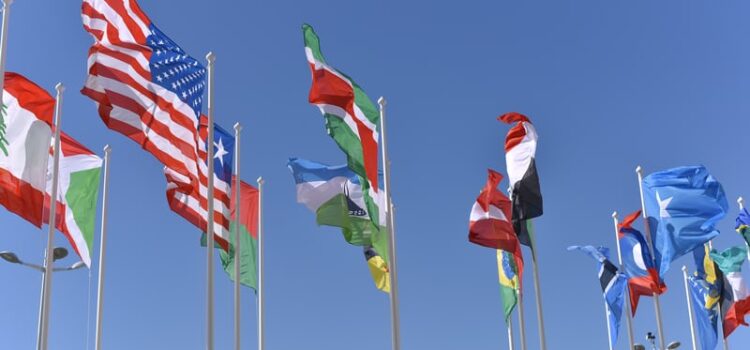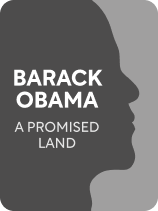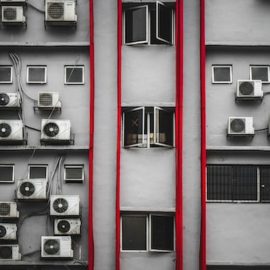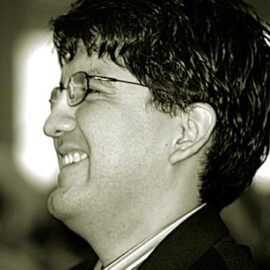

This article is an excerpt from the Shortform book guide to "A Promised Land" by Barack Obama. Shortform has the world's best summaries and analyses of books you should be reading.
Like this article? Sign up for a free trial here .
What did President Obama do at the G20 summit? What role did the U.S. play at the meetings, and was it successful?
For President Obama, the G20 Summit was a huge opportunity to prove himself. At the summit, he was able to establish himself as a leader in economics and foreign policy.
Read more about Barack Obama, the G20 summit, and how Obama established himself as a global leader.
President Obama at the G20 Summit in London
One of the earliest opportunities for the Obama administration to present the renewed American commitment to internationalism was the G20 Summit in London in April 2009. The G20 was an annual meeting of leaders from the world’s 20 largest economies.
The goal of the 2009 summit was to discuss the financial and economic crisis and agree on a framework for rebuilding the global economy. It was clear that the U.S. alone could not power a recovery. With a badly depressed housing market and record levels of household debt, U.S. consumers were not in a position to rejuvenate global demand on their own. Individual countries (and international institutions like the European Union) would have to use their own fiscal and monetary policies to dig themselves out.
As Obama saw it, the United States could not simply force other countries to bend to its will, but it could still build international coalitions and exercise moral leadership in tackling the world’s most pressing issues.
The BRIC Countries and the Need for U.S. Leadership
For President Obama, the G20 Summit was an opportunity for the U.S. to be a leader. At the London summit, Obama had his first opportunity to meet the key international leaders whose support he would need. European heads of state like German Chancellor Angela Merkel and French President Nicolas Sarkozy, however, were reluctant to undertake the kind of deficit spending policies that Obama and Treasury Secretary Geithner felt were necessary, unless they could also secure the cooperation of the BRIC countries.
The BRIC countries (Brazil, Russia, India, and China) were a group of large countries with rapidly growing economies that, because of their size, would inevitably come to play a leading role in shaping the international order. Although collectively they represented 40 percent of the global population, they still only controlled a far smaller share of global GDP. But their demands for international power could not be ignored forever. They would no longer be content existing on the margins of history—and decisions made by international bodies like the G20 would increasingly lack legitimacy if the BRIC countries did not play a significant role in crafting them. Still, Obama was skeptical of the ability of these countries to assume the mantle of global leadership.
Despite its economic growth, Brazil’s government was still mired in corruption. After some progress toward democracy in the 1990s, Russia had backslidden into authoritarianism under Prime Minister Vladimir Putin (who was widely known to be the real power in Russia, not the nominal leader, President Dmitry Medvedev). Putin’s Russia was a haven of crony capitalism, oligarchy, and kleptocracy.
Although Obama admired Indian Prime Minister Manmohan Singh and believed him to be honest and capable, the country was still far from a paragon of enlightened 21st-century values. India remained a nation riven by caste and religious divisions (which could still erupt in episodes of spectacular violence in the smaller cities and countryside), with large pockets of extreme poverty and illiteracy.
China posed the most interesting challenge. Clearly, it was a rising superpower. Modern cities like Shanghai and Guangzhou dazzled foreign visitors with their rapid growth, high-rise skyscrapers, and sophisticated core of white-collar tech workers. Since emerging from the shadow of Maoism in the 1970s, the country had undertaken sweeping economic reforms that unleashed the power of capitalism and helped move hundreds of millions of people out of deep poverty—achieving the most rapid economic growth in human history.
With its military might and a rising middle class that increasingly demanded the same standard of living that they saw in the West, China was clearly poised to throw its weight around on a global scale. Yet in surveying their delegation at the G20, Obama saw that leaders like President Hu Jintao seemed little interested in playing a leading role in shaping the global order.
In observing the shortcomings of these so-called “rising powers,” Obama knew one thing was clear— the world still needed the U.S. to lead the way and maintain the postwar liberal, free-market global order into the 21st century.
Tentative Steps Forward
With the Obama team largely leading the charge, the G20 nations were able to reach consensus on some meaningful steps to combat the global recession. For President Obama, the G20 Summit was successful, and he lead the charge.
The summit ended with an agreement by the signatory nations to commit to free-trade policies (avoiding a mutually destructive trade war marked by tariffs and quotas), a $1.1 trillion fiscal stimulus, a crackdown on international tax havens, and new financial regulations to limit the excessive risk-taking and lax lending practices that had spurred the financial crisis.
Separately, and to Barack’s great delight, Michelle dazzled on the world stage, wowing international audiences when she spoke to the students at an all-girls school in central London.
Many of these girls were of South Asian or West Indian descent, and powerfully related to Michelle’s story of needing to overcome the barriers she’d faced as a Black woman in the white-dominated law profession. It was the beginning of the powerful bond that Michelle would go on to form with young women around the world, as she became a figure of inspiration and empowerment.
Troubling Global Trends
Despite the successes in London, however, Obama saw some troubling trends bubbling up on the fringes of world politics. On a global level, the recession had clearly shaken the public’s faith in democracy, the rule of law, and free markets—especially in young democracies.
The dark forces of nationalism and populist authoritarianism were clearly on the rise in countries such as Turkey, Czech Republic, Hungary, Poland, and Russia. In these places, far-right parties and political movements had made stunning electoral inroads. Obama was still inspired by the throngs of young people that came out to see him whenever he traveled abroad—he saw in them the same enthusiasm for democracy and justice that had driven him as a young man, But he also felt the tremendous weight on his shoulders as he saw democracy under assault.
He knew that he needed to lead by example and use his power to show that change was possible, that his own youthful idealism could lead to a safer, more prosperous, and more equitable world.

———End of Preview———
Like what you just read? Read the rest of the world's best book summary and analysis of Barack Obama's "A Promised Land" at Shortform .
Here's what you'll find in our full A Promised Land summary :
- How Barack Obama went from relative obscurity to the first Black president
- What principles guided his political leadership style
- Why Obama retained an unshakable faith in the potential and promise of America






